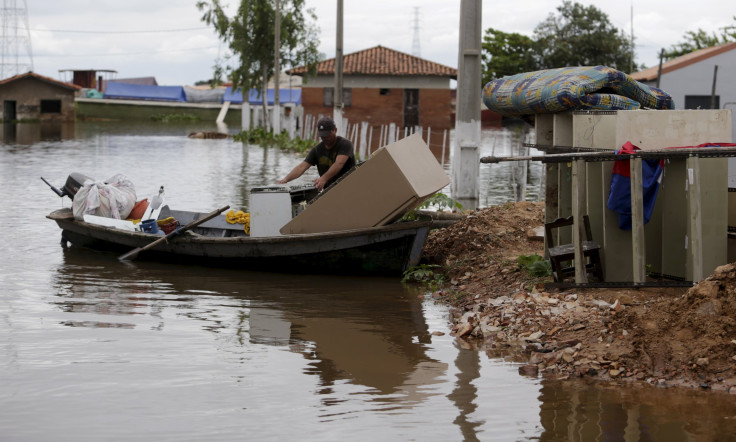South America Floods Worst In Over 50 Years; At Least 6 Dead, Hundreds Of Thousands Evacuated

South America has been hit by devastating floods, the worst in about 50 years, forcing the evacuation of more than 150,000 people in Paraguay, Argentina, Uruguay and Brazil. Days of heavy rain, precipitated by a powerful El Niño effect, are the cause of the flooding.
Paraguay is the worst hit, the BBC reported, where about 130,000 people were forced to leave their homes and President Horacio Cartes declared a state of emergency in the country. National Public Radio reported power supply being severely affected, with 125,000 homes in the capital, Asuncion, being without power as distribution centers nationwide were knocked out.
The Paraguay river, which flows through the capital, is just about a foot away from overflowing its banks, the BBC reported, adding that four people were killed by fallen trees.
In Argentina, two people died, according to the BBC report, and about 20,000 people were evacuated from their homes in Concordia, a border city along the Uruguay river, which is flowing about 45 feet above its normal mark. The flooding has mostly affected the northeastern regions of Entre Rios, Corrientes and Chaco.
In southern Brazil, civil defense authorities told the Associated Press that at least 7,000 people were evacuated in the state of Rio Grande do Sul, which shares borders with Paraguay, Argentina and Uruguay, Voice of America (VOA) reported. About 1,800 people were left homeless across 38 towns in the state, the officials added.
VOA reported officials in Uruguay as saying that 9,000 people near swollen rivers had been evacuated in the last few days, but, according to the BBC, most of them have now returned home.
This year’s El Niño phenomenon is the strongest in over 15 years, and among the top three since 1950, the United Nations' World Meteorological Organization said last month.
According to forecasts, the Brazil-Uruguay border region can expect dry weather in the next few days, but more rain is likely to cause water levels to rise further in Paraguay and Argentina.
© Copyright IBTimes 2024. All rights reserved.





















